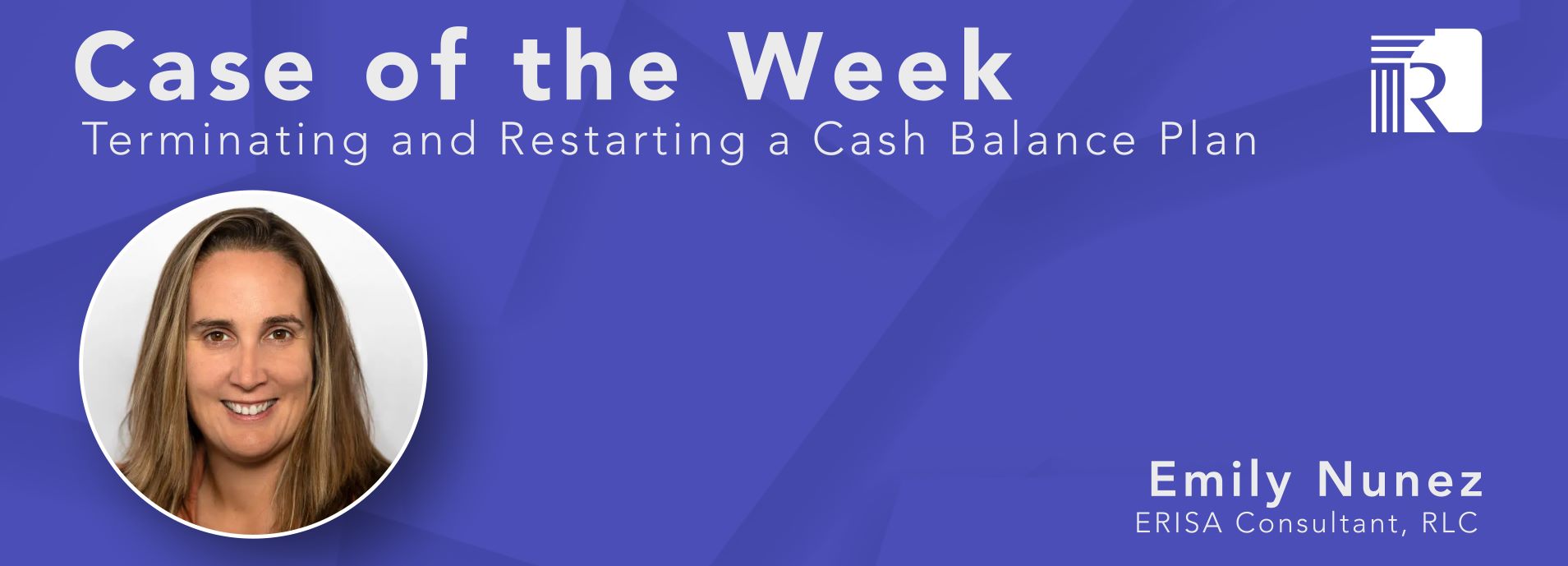
Issues With Terminating and Restarting a Cash Balance Plan
A sponsor of a cash balance plan that is looking to change the plan’s interest crediting rate should consider a plan amendment versus a termination.
Welcome to the Retirement Learning Center’s (RLC) Case of the Week. Our ERISA consultants regularly receive calls from financial advisors on a broad array of technical topics related to IRAs, qualified retirement plans and other types of retirement savings and income plans, including nonqualified plans, stock options, Social Security and Medicare. This is where we highlight the most relevant topics affecting your business. A recent call with a financial advisor in Nebraska is representative of a common question on cash balance plans.
“A financial planner is being advised he can terminate a cash balance plan that was opened less than 12 months ago and restart a new plan to change to a “market-based” interest credit rate design. What are the issues with terminating and restarting a cash balance plan in this example?”
Highlights of the discussion on incorporating a market-based design into an existing cash balance plan
Highlights of Discussion
The advice being provided, while not technically incorrect, is not the most effective strategy for adopting a “market-rate” return approach within the cash balance plan and, in fact, the plan termination strategy could result in additional IRS scrutiny.
Terminating the plan could be problematic as the IRS maintains an expectation of plan permanency with regard to retirement plans, a topic we have previously discussed in our “Plan Permanency” Case of the Week. Any plan that terminates within a few years must document, as evidence, a reason or “business necessity” for terminating the plan. Revenue Ruling 69-25 defines a business necessity as any adverse business conditions, which can include bankruptcy, insolvency or merger and acquisition activities that were not foreseeable at the time the plan was created. Terminating solely based on an interest crediting rate decision is unnecessary and could be problematic.
Changing the interest crediting rate can be accomplished via an amendment of the current plan. Of course, plan sponsors contemplating a change to their cash balance plan should consult with their legal and actuarial advisors regarding the best way to approach the amendment while satisfying anti-cutback requirements. For consideration, the IRS has provided guidance in its how to change interest crediting rates in a cash balance plan as well as in IRS in Notice 2024-02, Q&As H1-H5, which allows most cash balance plans to prospectively switch interest crediting rates.
Conclusion
Plan sponsors, with the help of their legal and actuarial advisors, should consider a plan amendment versus a termination if they would like to change the crediting rate currently used in their cash balance plans.
